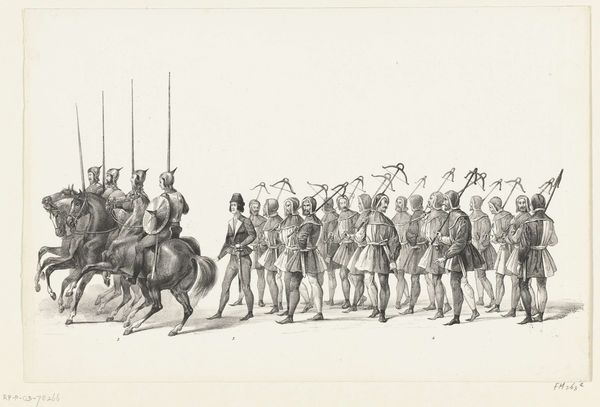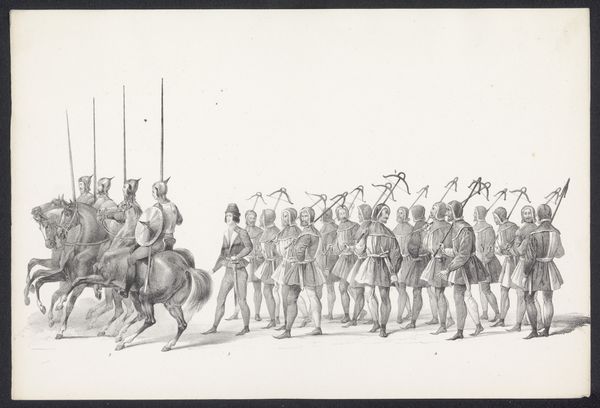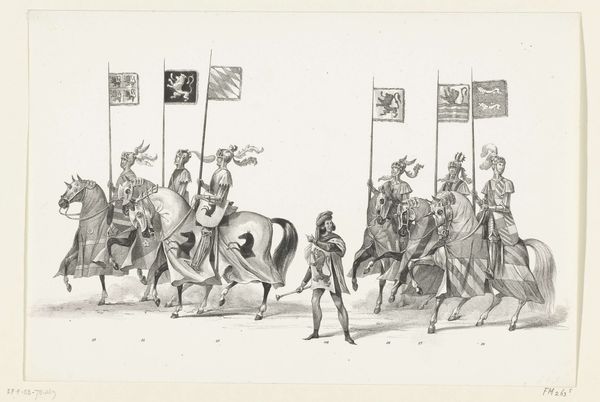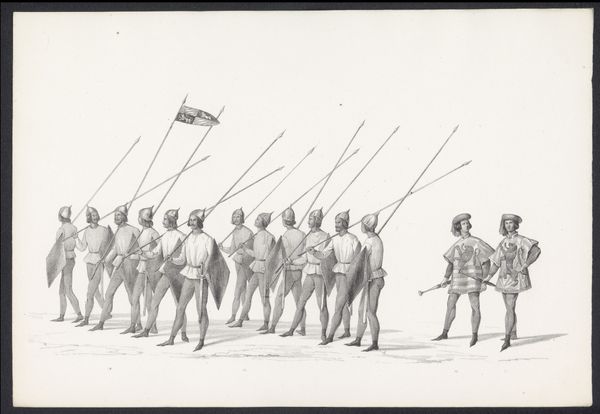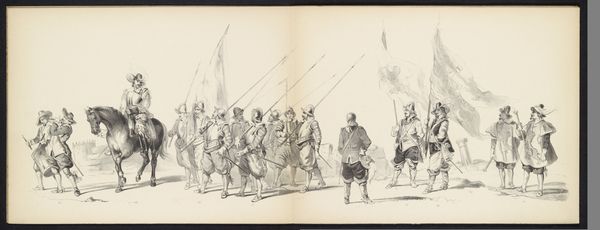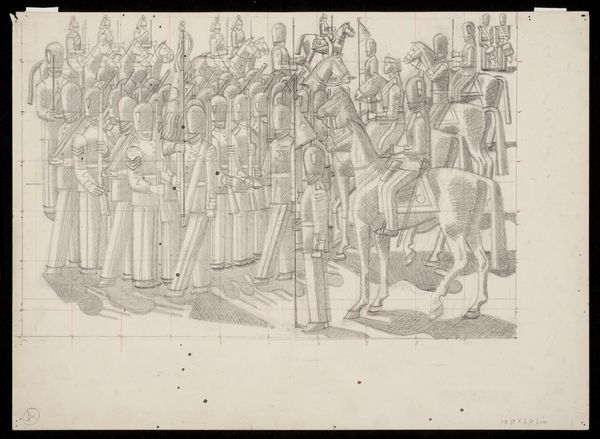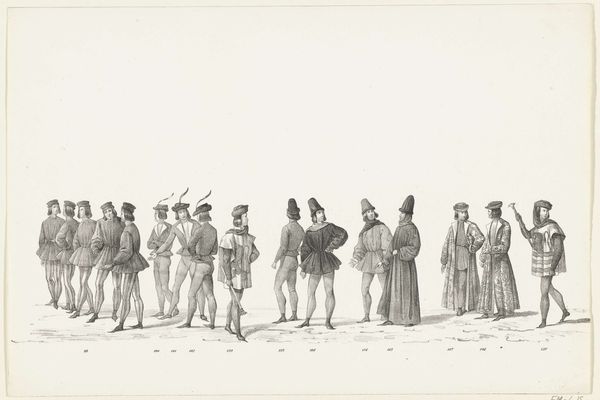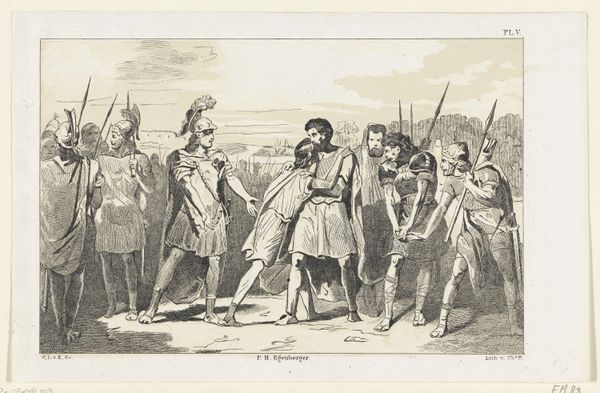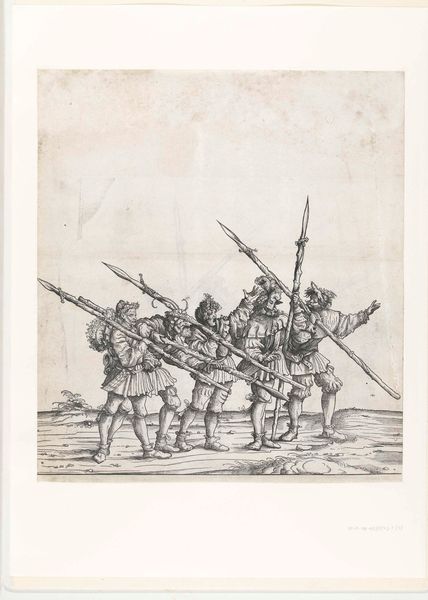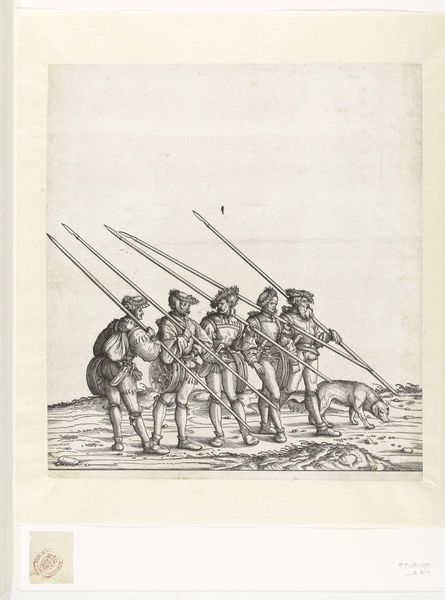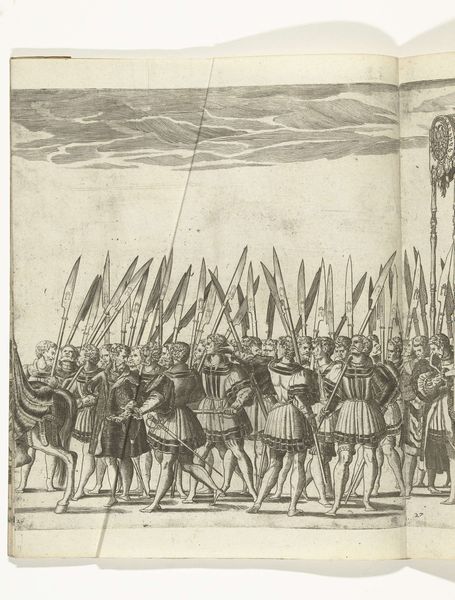
drawing, ink, pen
#
drawing
#
medieval
#
quirky sketch
#
narrative-art
#
pen sketch
#
figuration
#
personal sketchbook
#
ink
#
idea generation sketch
#
sketchwork
#
pen-ink sketch
#
sketchbook drawing
#
pen
#
history-painting
#
storyboard and sketchbook work
#
academic-art
#
sketchbook art
#
realism
#
initial sketch
Dimensions: height 230 mm, width 345 mm
Copyright: Rijks Museum: Open Domain
Editor: This is *Optocht nrs 109-113*, a pen and ink drawing made around 1840 by an anonymous artist. It features a regiment of soldiers, maybe? There's something unsettling about the sameness of all of them, like they're part of a machine. What can you tell me about it? Curator: Notice how each figure is meticulously rendered, yet the artist foregoes individuality for uniformity. What does this suggest about the societal values of the time, or perhaps, about the artist's commentary on those values? Are they romanticizing militarization or critiquing it? Editor: I didn't even think about a critique! They seemed so… official. What’s with the different weapons some of them are carrying? Some have pikes, others have… flails? Curator: Precisely! The variations in weaponry could symbolize different roles or ranks within the regiment, a visual hierarchy that reflects social stratification. Also, consider the banners – what symbols do you see? Editor: They seem to be arranged with colors blocked to form a heraldic pattern, but I can’t quite make them out. Curator: True. Flags create collective identity but also potential division, which can act as rallying points but also barriers, declaring "us" and, by extension, "them". This visual rhetoric would have had immediate significance. Think about what these men fought for, the symbols they wore, what they may have thought they defended, and the way these images stay relevant even in modern political symbolism. Editor: So the drawing could speak to a particular historical conflict, or to something more universal about the nature of conflict in general? Curator: Exactly. Perhaps a combination of both, layered with collective historical trauma, nostalgia for bygone eras, or apprehension towards the future. Editor: I will never look at another military parade the same way! Curator: Indeed, the symbols might look very different today but cultural memory and the visual language of power endure in unexpected ways.
Comments
No comments
Be the first to comment and join the conversation on the ultimate creative platform.
